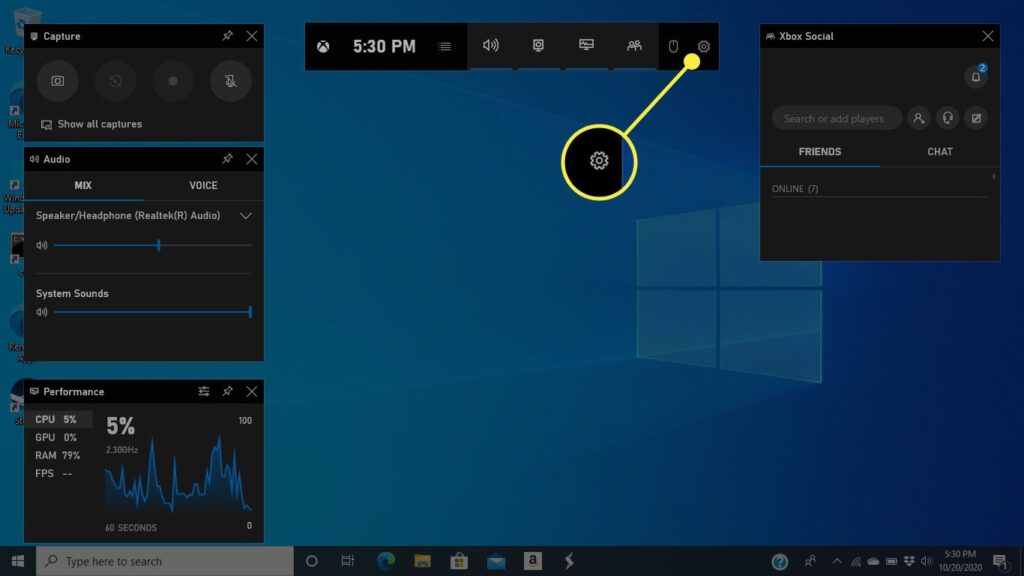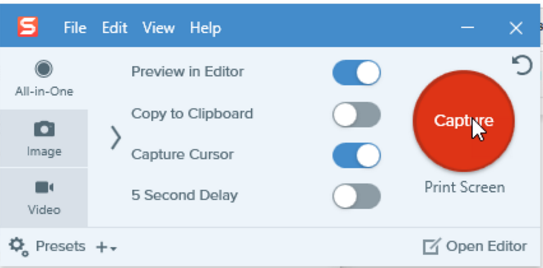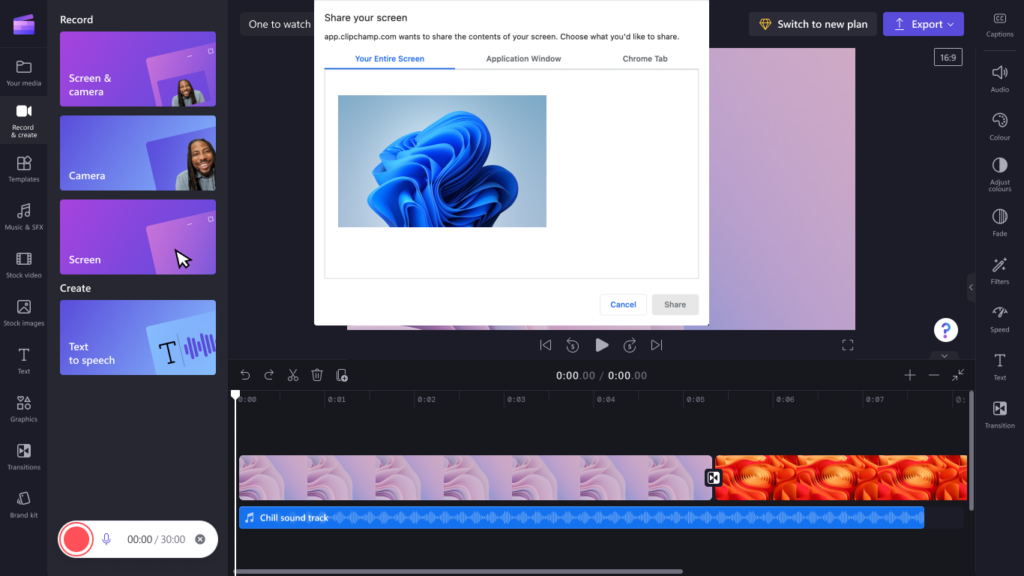Screen recording is a powerful tool that can serve a variety of purposes, from creating educational content to documenting software issues. Before you start, it’s important to understand the importance of screen recording and determine your specific needs. This will help you choose the right method and tools.
Using Windows Game Bar (Windows 10 and 11):

The Windows Game Bar is a built-in feature in Windows 10 and 11 that allows you to capture screen recordings and take screenshots. It’s a simple and convenient tool for basic screen recording needs. In this section, we will guide you through how to access the Windows Game Bar, start and stop a recording, configure Game Bar settings, and access your recorded videos.
Accessing Windows Game Bar:
Open the Game Bar: To access the Game Bar, press Win + G on your keyboard. This keyboard shortcut works in both Windows 10 and Windows 11.
Enable Game Bar (If Necessary): If it’s your first time using the Game Bar, you may need to enable it. Follow the on-screen prompts to do so.
Starting and Stopping a Recording:
Start Recording:
- Once the Game Bar is open, you’ll see a small overlay with various options.
- Click the “Record” button or press Win + Alt + R to start a recording. The overlay will minimize, and recording will begin.
Stop Recording:
To stop the recording, click the “Stop” button in the Game Bar overlay, or press Win + Alt + R again. The recorded video will be saved to your designated location.
Configuring Game Bar Settings:
Access Game Bar Settings:
- To access Game Bar settings, press Win + I to open the Windows Settings.
- Click on “Gaming.”
- In the left sidebar, select “Captures.”
Adjust Recording Settings:
- In the Captures settings, you can configure various options, including the folder where recordings are saved, the maximum recording length, and the video quality.
- Customize these settings to suit your preferences and needs.
Accessing Recorded Videos:
Default Location: By default, recorded videos are saved to the “Captures” folder in your Videos directory. You can access this folder by navigating to “This PC” > “Videos” > “Captures.”
Change Save Location: If you want to change the location where your recorded videos are saved, you can do so in the Game Bar settings mentioned earlier.
Windows Game Bar is a quick and simple way to start screen recording on your Dell laptop. It’s a useful tool for basic recording needs, such as capturing a software demo or gameplay footage. However, if you require more advanced features or editing capabilities, you may want to explore third-party screen recording software, as discussed in the next section
Using Third-Party Software

While Windows Game Bar is a convenient built-in tool for basic screen recording, third-party software provides more advanced features and flexibility for various recording needs. In this section, we will guide you through the process of choosing the right screen recording software and using three popular options: OBS Studio, Camtasia, and Snagit.
Choosing the Right Screen Recording Software:
Before you start, it’s essential to choose the right screen recording software based on your specific requirements. Here are some considerations:
OBS Studio: OBS Studio is a free, open-source software known for its versatility. It’s widely used for live streaming, recording gameplay, and creating professional content. It offers advanced features for customization but may have a steeper learning curve.
Camtasia: Camtasia is a paid screen recording and video editing software. It’s known for its user-friendly interface and powerful editing tools. Camtasia is suitable for creating tutorials, presentations, and professional content. It offers features like annotations and animations.
Snagit: Snagit is another paid screen capture and recording tool, with a focus on simplicity and ease of use. It offers various capture modes, including full-screen, region, and scrolling capture. Snagit is suitable for creating quick and straightforward recordings.
Recording with OBS Studio:
1. Download and Install OBS Studio:
- Go to the OBS Studio website (https://obsproject.com/) and download the software.
- Follow the installation instructions to set up OBS Studio on your Dell laptop.
2. Set Up a Recording Source:
- Open OBS Studio and add a source for your screen recording.
- Click the “+” icon in the “Sources” panel and choose “Display Capture” or “Window Capture,” depending on your recording needs.
3. Configure Recording Settings:
- In the OBS Studio settings, configure recording settings such as resolution, frame rate, and audio sources. You can access the settings by clicking “File” > “Settings.”
4. Start Recording:
- Click the “Start Recording” button to begin your screen recording. OBS Studio will capture everything on the screen based on your source settings.
5. Stop Recording:
- To stop the recording, click the “Stop Recording” button in OBS Studio.
6. Access Recorded Videos:
- By default, OBS Studio saves your recordings in the “Videos” folder on your Dell laptop. You can specify a different location in the settings.
Recording with Camtasia:
1.Download and Install Camtasia:
- Visit the TechSmith website (https://www.techsmith.com/camtasia.html) to download Camtasia.
- Follow the installation instructions to install the software.
2. Start a New Project:
- Open Camtasia and start a new project.
3. Configure Recording Settings:
- In the Camtasia Recorder, configure recording settings such as screen area, audio sources, and webcam input. You can also set hotkeys for easy control.
4. Start Recording:
- Click the “Record” button in the Camtasia Recorder to start your screen recording.
5. Stop Recording:
- To stop the recording, click the “Stop” button or press the specified hotkey.
6. Edit Your Recording:
- Camtasia provides a built-in video editor for post-recording edits. You can trim, add annotations, and enhance your recording.
7. Save and Export Your Video:
- After editing, save your video and choose an export format. Camtasia offers various export options.
Recording with Snagit:
1. Download and Install Snagit:
- Visit the TechSmith website (https://www.techsmith.com/snagit.html) to download Snagit.
- Follow the installation instructions to set up Snagit on your Dell laptop.
2. Start a New Capture:
- Open Snagit and click the “Capture” button to begin a new capture.
3. Select the Screen Area:
- Click and drag to select the area you want to capture on your screen.
4. Start the Recording:
- In the capture interface, click the “Record” button to start the screen recording.
5. Stop Recording:
- To stop the recording, click the “Stop” button in Snagit.
6. Edit Your Recording:
- Snagit offers basic editing features for trimming and enhancing your recording.
7. Save and Export Your Video:
- After editing, save your video and choose an export format.
Editing and Enhancing Your Screen Recordings:

After you’ve recorded your screen, you may want to edit and enhance the recordings to create more polished and professional content. In this section, we’ll explore various aspects of editing and enhancing screen recordings, including basic video editing with Windows Video Editor, advanced video editing with Adobe Premiere Pro, adding annotations and highlights, and improving audio quality.
Basic Video Editing with Windows Video Editor:
- Access Windows Video Editor:
- In Windows 10 or 11, you can use the built-in Windows Video Editor to perform basic edits on your screen recordings.
- Search for “Video Editor” in the Windows search bar and open the app.
- Import Your Recording:
- Click “New Video Project” and give your project a name.
- To import your screen recording, click “Add” under the “Project Library” and select your video file.
- Trim and Cut:
- In the video timeline, select your recording and click “Trim.” Drag the handles to cut unnecessary parts from the beginning and end of your video.
- Add Text and Titles:
- To add text or titles to your recording, click “Text” in the toolbar and choose the type of text you want to add. You can customize the text style, size, and position.
- Add Transitions:
- For smoother transitions between scenes, click “Transitions” in the toolbar and drag a transition effect between clips in the timeline.
- Enhance Audio:
- To improve audio quality, click “Audio” in the toolbar. Here, you can adjust the volume, add background music, or use audio presets.
- Export Your Edited Video:
- Once you’re satisfied with your edits, click “Finish video” in the upper-right corner. Choose the export settings and save your edited video.
Advanced Video Editing with Adobe Premiere Pro:
- Install Adobe Premiere Pro:
- Adobe Premiere Pro is a professional video editing software. You’ll need to purchase and install it on your Dell laptop.
- Import Your Recording:
- Open Adobe Premiere Pro and create a new project.
- Use the Media Browser to locate and import your screen recording.
- Arrange Clips:
- Drag your recording to the timeline to start editing. You can split, cut, and arrange clips as needed.
- Add Effects and Transitions:
- Adobe Premiere Pro offers a wide range of effects and transitions. You can apply color correction, animations, and more to enhance your recording.
- Add Text and Graphics:
- Use the text tool to add titles, captions, and other graphics to your video. Customize the appearance and animation of text elements.
- Improve Audio:
- To enhance audio quality, you can adjust audio levels, apply filters, and add background music or sound effects.
- Export Your Edited Video:
- When you’re satisfied with your edits, go to “File” > “Export” to configure export settings. Choose your desired video format and save your edited video.
Adding Annotations and Highlights:
- Use Video Editing Software:
- In video editing software like Windows Video Editor, Adobe Premiere Pro, or other third-party tools, you can add annotations, text, and highlights directly onto your screen recording.
- Text and Highlights:
- Select the area you want to highlight or annotate and add text, arrows, shapes, or other elements to draw attention to specific parts of your recording.
- Consider Dedicated Annotation Tools:
- You can also use dedicated annotation software or apps that allow you to add real-time annotations while recording. These tools are particularly useful for tutorials and demonstrations.
Improving Audio Quality:
Noise Reduction:
- In video editing software, you can apply noise reduction filters to reduce background noise in your recordings. This helps improve audio clarity.
Adjust Audio Levels:
- Ensure that your voice and other audio elements are balanced. You can adjust audio levels to make your voice more prominent and clear.
Use a High-Quality Microphone:
- For better audio quality, invest in a high-quality external microphone. USB microphones or lavalier microphones can significantly improve the sound of your recordings.
Voiceover and Narration:
- If your screen recording includes narration, consider re-recording your audio separately to ensure it’s of the highest quality.
Editing and enhancing your screen recordings can make a significant difference in the quality and professionalism of your content. Whether you’re performing basic edits with Windows Video Editor or advanced editing with software like Adobe Premiere Pro, these tools provide you with the flexibility to create compelling screen recordings.
Sharing and Exporting Your Screen Recordings:
After you’ve recorded and edited your screen recordings, the next step is to share your content with your audience or colleagues. This section will guide you through the process of exporting your recordings, choosing the right video format, and sharing your recordings through various channels, including social media, YouTube, and cloud storage.
Exporting Your Screen Recording:
- Open Your Video Editing Software:
- If you’ve edited your screen recording in video editing software (e.g., Windows Video Editor, Adobe Premiere Pro), open the project with the edited video.
- Export Your Video:
- In your video editing software, look for the “Export” or “Save” option. This is where you configure the export settings for your video.
- Choose Export Settings:
- Select the appropriate settings, such as the video format, resolution, and quality. Common video formats include MP4 (H.264), AVI, or WMV. The ideal settings may vary depending on your intended use and the platform you’ll share it on.
- Specify the Export Location:
- Choose the directory on your Dell laptop where you want to save the exported video. You can also specify the file name.
- Export Your Video:
- Initiate the export process. The time required for export depends on the length and complexity of your recording.
Choosing the Right Video Format:
The choice of video format is crucial, as it determines the quality and compatibility of your screen recording. Here are some common video formats and their uses:
MP4 (H.264): This format is widely supported and provides good video quality. It’s suitable for sharing on various platforms, including social media, websites, and video hosting services like YouTube.
AVI (Audio Video Interleave): AVI is a high-quality format suitable for professional video production. However, it may result in larger file sizes.
WMV (Windows Media Video): WMV is a Windows-native format that offers good compression and compatibility. It’s suitable for sharing videos on Windows devices and platforms.
MOV (QuickTime): MOV is commonly used for Apple devices and software. It’s a high-quality format often used for professional video editing.
FLV (Flash Video): FLV is a format that used to be popular for online streaming. It’s still compatible with some platforms.
The choice of format should align with the platforms and devices your audience uses. In many cases, MP4 (H.264) is a versatile and widely supported format that works well for sharing screen recordings.
Sharing Your Screen Recordings:
Social Media:
Platforms like Facebook, Twitter, Instagram, and LinkedIn allow you to upload and share videos directly. Simply upload your video to your preferred social media platform.
YouTube:
YouTube is a popular platform for sharing videos. Create a YouTube channel if you don’t already have one and upload your screen recordings. You can set the videos to private, unlisted, or public.
Vimeo:
Vimeo is another video hosting platform that provides options for privacy settings. You can upload and share your videos with specific audiences or publicly.
Cloud Storage:
Services like Google Drive, Dropbox, and OneDrive allow you to upload and share your screen recordings. Share the video file’s link with the intended recipients.
Email:
Attach the video file to an email and send it to your contacts. Be mindful of the attachment size limits in your email service.
Content Management Systems (CMS):
If you have a website or blog, you can embed your screen recordings using the provided HTML code. This allows you to share your content directly on your site.
Video Hosting Services:
Consider using specialized video hosting services like Wistia or Vimeo for Business if you require advanced privacy and analytics features.
Screen Recording Platforms:
Platforms like Screencast-O-Matic and Loom offer integrated options for screen recording and sharing. You can record and share within the same app.
When sharing your screen recordings, consider your audience and the level of privacy or access control you need. Choose the sharing method that aligns with your content distribution strategy and audience preferences.
By exporting your screen recordings in the right format and sharing them effectively, you can reach your audience and convey your message or content seamlessly.
Conclusion:
In the concluding section, we’ll summarize the key points of the guide and provide a final perspective on the value of screen recording and how you can leverage this skill for various purposes. Whether you’re a beginner or an advanced user, this comprehensive guide will help you master screen recording on your Dell laptop.
By mastering the art of screen recording, you can effectively communicate, educate, and entertain your audience. Whether you’re a content creator, educator, gamer, or professional, screen recording is a valuable tool that can help you achieve your goals and share your knowledge and experiences.
So, pick up your Dell laptop, choose the method that suits your needs, and start creating compelling screen recordings today.




